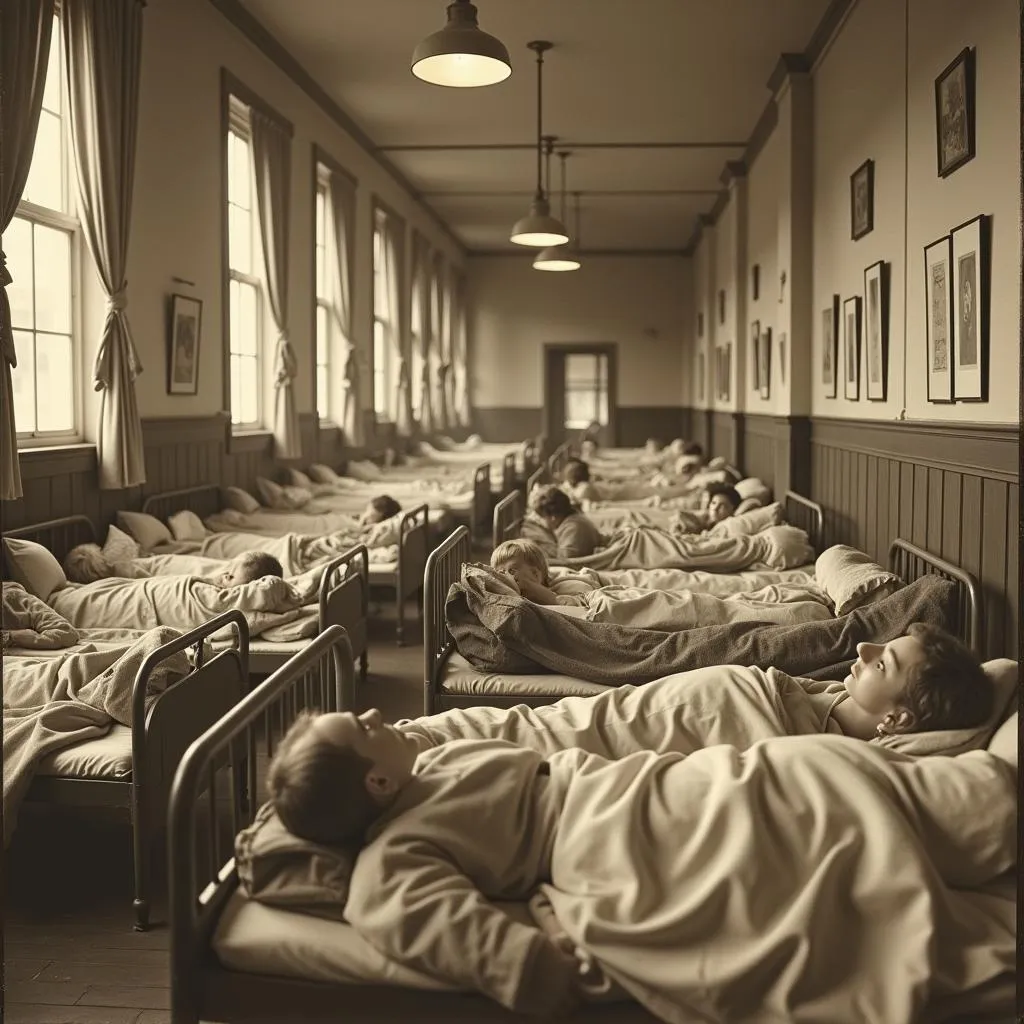Dorothea Dix Hospital, a sprawling psychiatric facility located in Raleigh, North Carolina, has a long and complex history. While it served as a beacon of hope for many seeking mental health treatment, the hospital’s past is also marked by tragedy. The topic of “Dorothea Dix Hospital Deaths” often surfaces, leading many to seek answers about the lives lost within its walls.
A Legacy Marred by Tragedy: Examining Dorothea Dix Hospital Deaths
Established in 1849 as the North Carolina State Hospital for the Insane, Dorothea Dix Hospital aimed to provide compassionate care for those suffering from mental illness. However, the reality was often far from ideal. Overcrowding, understaffing, and limited understanding of mental health challenges during the 19th and early 20th centuries contributed to a grim reality for many patients.
 Dorothea Dix Hospital Overcrowding
Dorothea Dix Hospital Overcrowding
Unveiling the Truth: Causes of Death at Dorothea Dix Hospital
Records indicate that deaths at Dorothea Dix Hospital resulted from a variety of factors, some directly related to the limitations of medical knowledge and treatment options available during specific periods. These included:
- Infectious Diseases: Tuberculosis, pneumonia, and influenza were rampant in institutional settings during the late 19th and early 20th centuries, claiming the lives of many patients.
- Poor Living Conditions: Overcrowding, inadequate sanitation, and poor nutrition weakened patients’ immune systems, making them more susceptible to illness.
- Inadequate Treatment: Limited understanding of mental illness led to treatments that were often ineffective or even harmful.
- Patient-on-Patient Violence: The challenges of managing a large population struggling with mental illness, coupled with insufficient staff, tragically led to instances of patient-on-patient violence resulting in fatalities.
 Early 20th Century Treatment at Dorothea Dix Hospital
Early 20th Century Treatment at Dorothea Dix Hospital
The Shift Towards Humane Treatment
By the mid-20th century, significant advancements in mental health treatment, coupled with increasing awareness of patients’ rights, led to a gradual shift in the approach to care at Dorothea Dix Hospital.
Key Changes and Improvements:
- Introduction of Psychotropic Medications: The development of antipsychotic and antidepressant medications revolutionized treatment, offering hope and improved quality of life for patients.
- Emphasis on Therapy and Rehabilitation: Group therapy, occupational therapy, and other rehabilitative programs became central to treatment plans, fostering patients’ recovery and reintegration into society.
- Improved Living Conditions: Efforts were made to address overcrowding and enhance living conditions, recognizing the importance of a safe and humane environment for healing.
 Modern Therapy Session at Dorothea Dix Hospital
Modern Therapy Session at Dorothea Dix Hospital
Remembering the Lives Lost: Memorialization and Reflection
While Dorothea Dix Hospital officially closed its doors in 2012, its legacy continues to spark conversations about mental health care, patient rights, and the ethical treatment of vulnerable populations.
The hospital cemetery stands as a poignant reminder of the lives lost within its walls. Though many graves remain unmarked, efforts are underway to identify those laid to rest and honor their memories.
Conclusion
The history of Dorothea Dix Hospital, including the unfortunate reality of deaths within its walls, serves as a stark reminder of the evolution of mental health care. As we strive to provide compassionate and effective treatment for those struggling with mental illness, it’s essential to learn from the past, advocating for humane conditions, ethical practices, and continued advancements in the field.